There’s an inconvenient truth at the heart of convenience retailing. Earlier this year - and within weeks of each other - Tesco and Morrisons announced plans to close some stores and scale back expansion.
They’re not alone. With the convenience battle growing ever more fierce, Musgrave symbols Budgens and Londis lost 320 stores from their combined estate, according to the Grocery Retail Structure (GRS) 2015 report, out this week - and accompanied as these were by heavy losses, Musgrave announced it was selling up to Booker in a consolidation play that will give the UK’s largest grocery wholesaler a 9.4% share of the total convenience sector.
So how is the sector changing? How are consumers shopping the sector? Who’s growing? And what are successful c-store operators doing to make sure they win customers’ hearts, minds and wallets?
Compiled by William Reed Business Media/IGD, the GRS paints a mixed picture: for example, it shows that the number of convenience stores has risen again, up 1.5% to 40,868 c-stores. Yet despite all the hoo-hah about the end of the space race, and the decline of the traditional weekly shop, supermarkets are opening at a faster rate.
As ever, there are winners and losers. Four operators notched up double-digit store growth - M&S Simply Food (38.1%), Sainsbury’s Local (14.9%), McColl’s (11.5%) and Little Waitrose (13.3%). And notwithstanding the retrenchment by Tesco and Morrisons, the nine c-store chains owned and operated by the multiples collectively opened 401 new stores and ow boast 4,173 c-stores between them. But if that 10.6% growth sounds impressive, it is actually less than the 13.6% increase recorded in 2013.
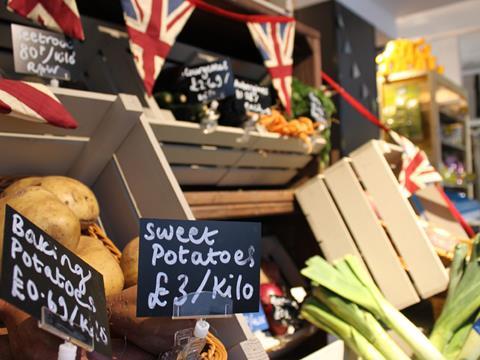
The situation at Tesco is particularly nuanced: it remains the most acquisitive of all the mults, opening 151 new stores last year to take its total c-store estate, including One Stop, to 2,347. But it opened 217 in 2013. And, crucially, 109 of the c-store openings in the new GRS were new One Stops - 69 of which were franchised. Growth of Express is expected to be even slower next year as 18 of the 43 underperforming stores it closed were Express stores.
At rival Morrisons the convenience slowdown is even more marked. This time last year, Morrisons declared it would open about 250,000 sq ft of convenience space a year. Announcing plans to close 23 underperforming c-stores, to slow new openings significantly, and to review the M Local proposition, Morrisons admitted c-stores now in their second year of trading were “not seeing the level of trading performance we had anticipated”. Indeed the GRS shows the slowdown had already begun before the new management team came in: its c-store estate grew by 45.7%, or 48 stores to 153 sites last year. It opened 91 the year before.
The closures at both Tesco and Morrisons are a “drop in the ocean” compared with the size of the entire convenience sector, believes Steve Rodell, director and head of retail at Christie & Co. But their decision to slow openings could make it difficult for property developers looking for tenants, he concedes.
“The supermarket multiples tend to go for new starts rather than going concerns, so development schemes that build flats and then look for a c-store tenant for the ground floor could find themselves having to look beyond the supermarket operators now,” he adds.
At least The Co-operative Group is on the lookout for c-stores again. After its near implosion, it opened 51 new stores in 2014 to boost its c-store estate to 1,836 shops. The Co-op opened the lion’s share of the 85 new stores opened by the movement more generally, and has pledged to open 100 c-stores in 2015.
“The sector has a very exciting future and The Co-op has some important advantages,” says Co-op Group retail CEO Steve Murrells. “We have always been a community retailer and convenience is all about meeting those community needs. That can be providing a range suitable for a rural location where the convenience store is the only retailer in that location, or in a busy city where shoppers want a great lunch or evening mealtime offering. Our strategy is to focus on growing the core convenience estate, upgrading our store formats, improving our product range, getting availability right, and ensuring our prices are competitive. And all of this must be delivered with great customer service.”
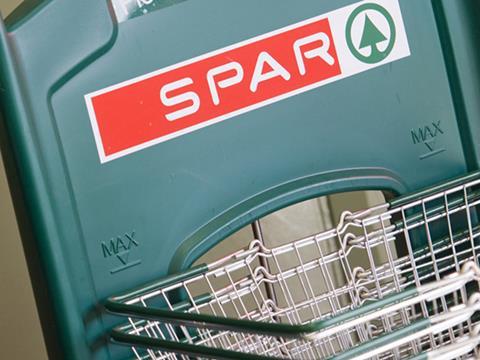
Symbols
Once again symbols have made strong gains. They collectively grew store numbers by 1.6% to 15,423 sites last year. But they’re not having it all their own way. Though there was strong growth for fascias such as Booker’s Premier Express (+27.2%), Simply Fresh (+24.4%) and Today’s (+19.2%), Musgrave’s proposed sale to Booker of its remaining 1,630 Londis shops (it’s lost a further 82 in 2015 after 306 jumped ship last year), together with its 167 Budgens (it’s lost 29 since the start of 2014) suggests it’s not just consumers who are increasingly fickle.
Slower growth can also be attributed to the rise of One Stop Franchise. It revealed earlier this month it had signed up its 100th franchisee. Of those 100, 62 have switched from a rival symbol group.
Another factor is a slowdown in the number of unaffiliated independent operators choosing to go it alone rather than commit to a symbol. The GRS shows the number of unaffiliated stores fell by just 0.7% in 2014 to 18,507 stores - that’s the lowest decline since the GRS started tracking percentage changes in 2009.
“You don’t need to be a symbol store to offer good retailing to consumers,” points out National Federation of Retail Newsagents CEO Paul Baxter. “Non-symbol stores offer uniqueness and a different shopping experience and there are loads of excellent unaffiliated stores out there that offer that power. Who wants to walk down the same street in any town in the UK with the same symbols offering the same offers, with just different faces behind the counter?”
Association of Convenience Stores CEO James Lowman believes there has been a distinct improvement in recent years in the independent sector. “More stores are now spending time working on the business and not just working in the business. Additionally, our research shows many unaffiliated stores have a business model that is incredibly resilient to changes in costs. These stores have very low employment costs and other overheads and will tend to have a consistent turnover, which keeps them in business year to year.”
The other factor restraining convenience is the discounters: accounting for 65% of the 345 new supermarkets that opened, they are a powerful hybrid: a more convenient version of a supermarket.
“The rise of the discounters makes the job harder,” admits The Co-op Group’s Murrells, “as retailers face into lower margins while needing to invest in their store estate and develop new quality product innovations.”
The success of the discounters has encouraged more consumers to eschew the traditional weekly supermarket shop. But convenience stores also have to take credit for the change in consumer behaviour: average spend in a c-store increased from £6.05 in 2014 to a record £6.52, and the number of items bought in a c-store has also hit three products for the first time in 10 years, driven by increasing numbers of shoppers buying five or more items, according to him!’s annual Convenience Tracking Report.
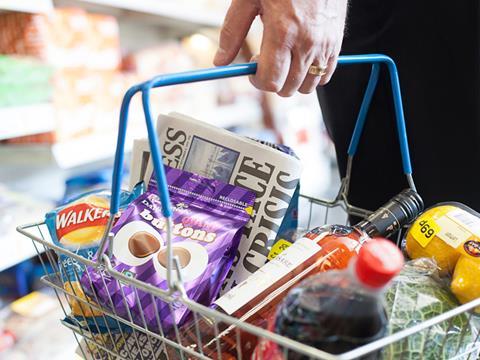
This increase hasn’t happened by accident: c-store shoppers are buying products on promotion. Some 20% said they bought something on promotion - that’s up from just 6% in 2000, and from 17% in 2014.
“Increasingly over the last five years c-stores have had to join the price/promotions battle,” says Him! communications director Katie Littler. “Post-recession, price-led shoppers are more used to seeing promotions in-stores.
“Promotions play an important role in creating an overall positive value-for-money perception. One in five shoppers receive promotional leaflets from their local c-store and an astounding 62% say those leaflets encourage them to visit the store.”
Andrew Thornton, owner of Thornton’s Budgens in Belsize Park, North London, has seen shoppers become much more price aware. “While I don’t think it is affecting distress and small top-up, it is affecting the larger basket top-ups that make up a big percentage of our business and are a feature of how people shop today.
“I’ve had competitor prices for cat litter, washing products and gluten-free biscuits - to name but a few - quoted to me,” he adds. “That makes the traditional ‘price match basket’ of 50 lines much less easy to use as a tool - shoppers are much more savvy than they were.”
Spar MD Debbie Robinson agrees: “Top-up shoppers are willing to trade range and quality for location and price,” she says. “There is little customer loyalty in the marketplace, which represents a challenge for convenience retailers.”
Impulse buys
The bigger basket size and spend being enjoyed by the c-store sector has also been driven by an increase in the number of shoppers making impulse purchases.
Him! found 18% of shoppers bought something on impulse in a c-store in 2015, up from 15% in 2014 and 12% in 2010. “Shoppers in c-stores are notoriously on ‘auto-pilot’,” explains Katie Littler. “Very few ‘browse the store’ but suppliers and retailers are increasingly managing to ‘interrupt’ these shoppers and the increase in impulse purchasing will be playing a part in the growth in basket size.”
She adds that ‘interrupt’ tactics adopted include queue systems, which are important because one in five shoppers only go to the till area in a c-store. One in 10 claim to have picked up an impulse purchase at the queue or till point, while 14% say they have noticed messages or signage while queuing.
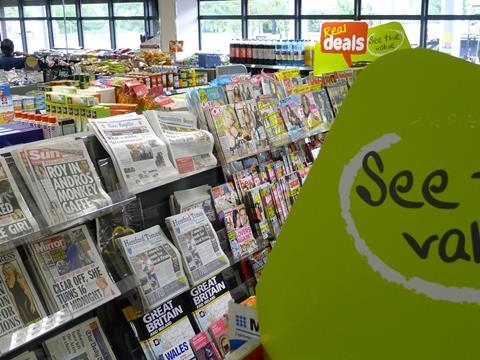
Foodvenience
After the tobacco display ban was rolled out to all c-stores last month, commentators are predicting the till area will become a new and growing battleground for suppliers. With tobacco out of sight, suppliers and retailers alike have the opportunity to use the space to their advantage.
Some convenience operators are already doing this. Forecourt giant BP has used the now redundant space, for example, to showcase its healthcare range, while others are using it to display e-cigarettes and spirits.
The key for retailers is not only to get the basics right, but offer something different, believes Spar’s Robinson. “We know that convenient location, good value for money, low prices, good range of products and good quality fresh produce are the five most important factors shoppers consider when choosing to do their top-up grocery shopping. These are the biggest opportunities for convenience retailers in 2015.
“Spar is adapting to make the most of the trend for convenience and foodservice or ‘Foodvenience’, and is bringing these services to many of our retailers. Many Spar stores now offer a Subway, Costa Coffee, Insomnia, Starbucks, Greggs, or indeed their own coffee brand like Paul Stone’s Cheeky Coffee Co in Manchester. It’s all about making sure the store meets the needs of its customer profile.”
Lowman agrees. “C-stores have gone from being primarily top-up shops to becoming a destination where consumers can socialise, pick up online orders and get great quality food and drink on the go,” he says. “The scaling back of expansion plans from Tesco and Morrisons demonstrates that while there has been growth in the sector, running a successful store is not guaranteed. The closure of these stores will be a wake-up call for many looking to expand, and will hopefully encourage them to make sustainable investment decisions in the future.”
The convenience sector is changing then, but that change has only just begun. And operators are going to have to think on their feet to keep up with such a dynamic market.
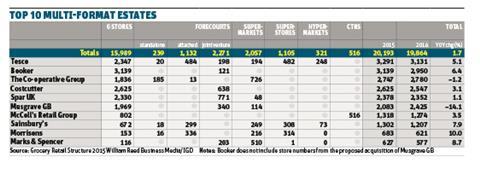
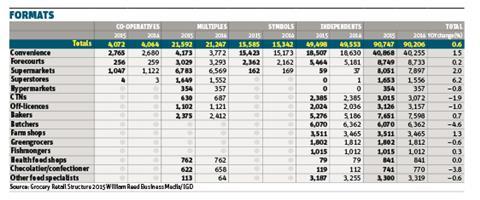
Key findings from the him! convenience tracking programme 2015
Average spend
In 2000, shoppers spent an average £3.79 in a convenience store, but today they are spending a record £6.52 - which is up 7.7% from £6.05 in 2014. According to him!, the increase since 2000 is broadly in line with inflation and price increases since the start of the millennium, but a continued upward curve suggests convenience continues to be a trusted choice for shoppers.
Category purchases
More shoppers are buying fruit & veg. In 2000, just 4% bought fruit & veg in a c-store. This has increased to 10%, showing the investment convenience stores have made in the category. However, there are casualties. With newstrade in terminal decline, the percentage of c-store shoppers buying magazines has slipped from 7% in 2000 to 3%, while newspapers have fallen from 21% to 18%. Confectionery (27% to 19%) also fell.
Promotions
In 2000, just 6% of shoppers claimed to have bought an item on promotion in a c-store. In 2015, this figure jumped to 20%. “37% of promotional shoppers bought an unintended item and they also help drive brand switching at fixture - 9% of shoppers switched from the product they were intending to buy, and 6% switched brands,” says him! communications director Katie Littler.
One-item baskets
There remains no change in the percentage of shoppers buying just one item in store. Him! found 30% bought just one item in 2013, versus 29% in 2014 and 31% in 2015. “The scope to increase the basket size of these one-item shoppers is huge and provides a significant opportunity,” says Littler. “We need to understand who the one-item shopper is and identify how best to target them.”
PREDICTIONS
Him! predicts ‘top-up’ missions in a c-store will increase 22% in value from £16.9bn in 2015 to £20.6bn in 2020. ‘Food to go’ will see a 60% rise - from £5.2bn now, to £8.3bn, while ‘meal for tonight’ missions will increase 50% in value from £1.8bn to £2.7bn. It also forecasts average spend will hit £7.69 by 2020, while average basket size will increase by 10% from 3.0 items to 3.3 items over the next five years.








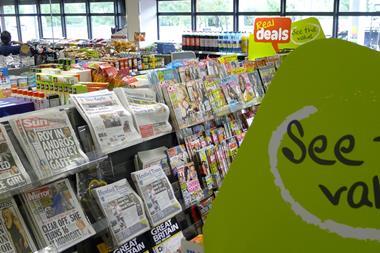
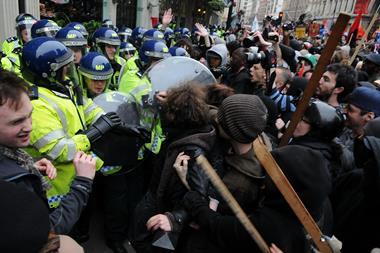
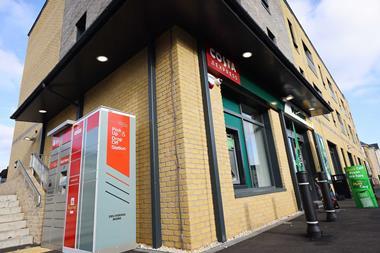


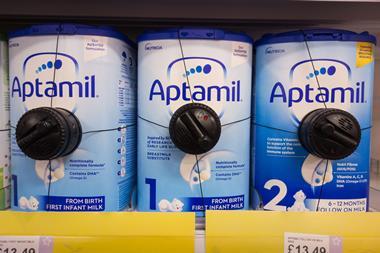
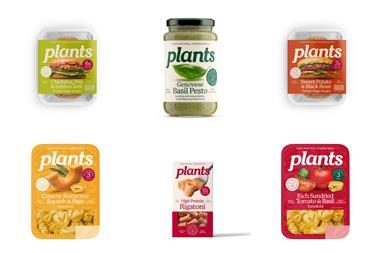

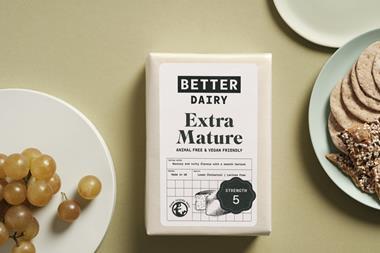


No comments yet